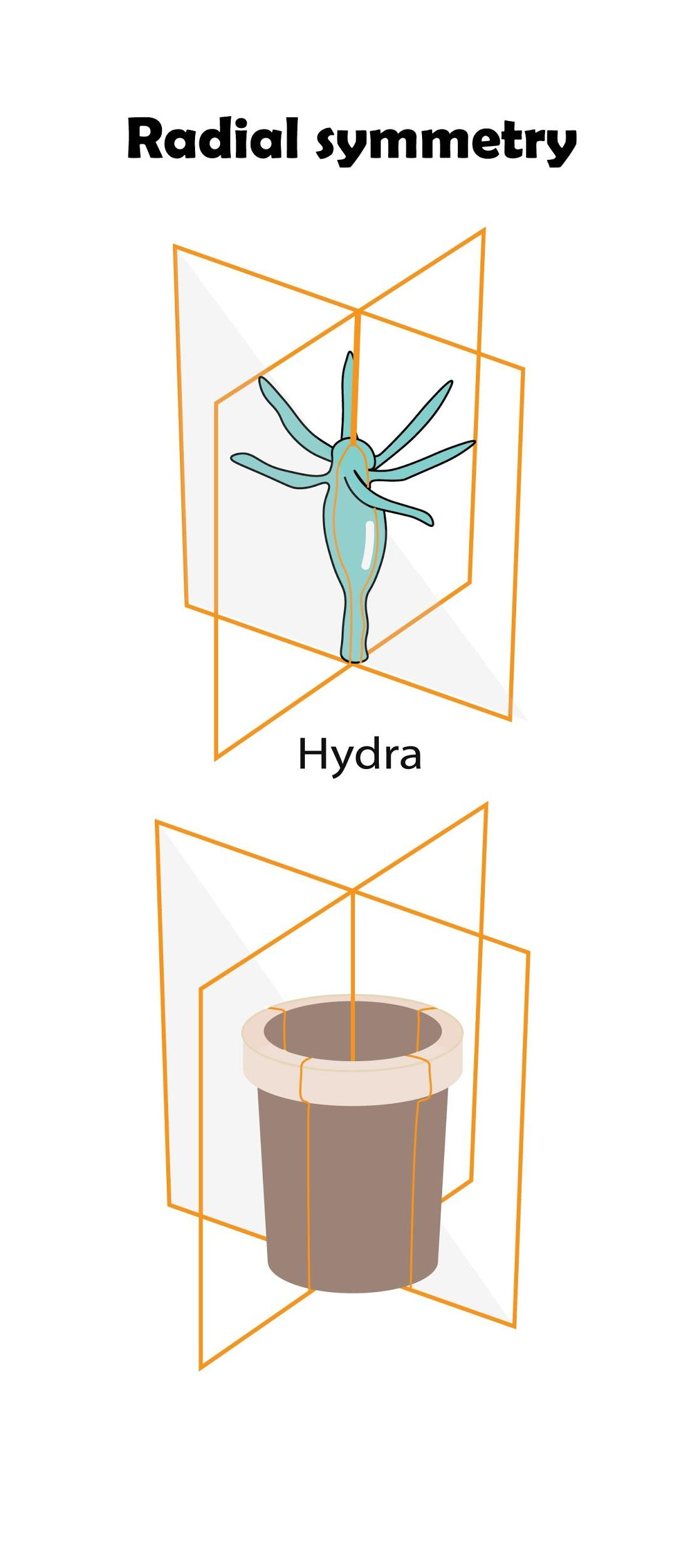Answer
392.1k+ views
Hint: Hydra is found within inland freshwater systems in Europe, Asia, and America. Their body parts are arranged around a central axis like rays. Hydras are predatory organisms. They eat insect larvae, larval fish, worms, small crustaceans, and other invertebrates.

Complete answer:
Hydra is carnivorous. Hydras are small organisms and belong to the class Hydrozoa. They live in temperate and tropical regions. The body of hydra is around 10 mm long when extended. It possesses a simple adhesive foot called the basal disc. By using this foot they attach themselves to solid surfaces such as stones, twigs, or vegetation. The neural organization in hydra is composed of a simple network of neurons. It is believed that they do not die of old age. Instead, the body breaks into distinct pieces called fragments. Each fragment then grows into an adult capable of producing offspring. This mode of asexual reproduction is called ‘fragmentation.’ Hydra also reproduces by other asexual means like budding. Hydra belongs to the Coelenterata species i.e. it has an open body cavity, it is not a true cavity.
So, the correct answer is, ‘Carnivorous.’
Note:
- Hydra is a genus of freshwater organisms from the phylum Cnidaria. There are about 20 to 30 different species of hydra.
- The body of hydra is tubular and shows radial symmetry.
- Hydras can be described as carnivorous in their food habit.
- They make use of their stinging cells to stun, entangle, and kill their prey before eating it.

Complete answer:
Hydra is carnivorous. Hydras are small organisms and belong to the class Hydrozoa. They live in temperate and tropical regions. The body of hydra is around 10 mm long when extended. It possesses a simple adhesive foot called the basal disc. By using this foot they attach themselves to solid surfaces such as stones, twigs, or vegetation. The neural organization in hydra is composed of a simple network of neurons. It is believed that they do not die of old age. Instead, the body breaks into distinct pieces called fragments. Each fragment then grows into an adult capable of producing offspring. This mode of asexual reproduction is called ‘fragmentation.’ Hydra also reproduces by other asexual means like budding. Hydra belongs to the Coelenterata species i.e. it has an open body cavity, it is not a true cavity.
So, the correct answer is, ‘Carnivorous.’
Note:
- Hydra is a genus of freshwater organisms from the phylum Cnidaria. There are about 20 to 30 different species of hydra.
- The body of hydra is tubular and shows radial symmetry.
- Hydras can be described as carnivorous in their food habit.
- They make use of their stinging cells to stun, entangle, and kill their prey before eating it.
Recently Updated Pages
How do you arrange NH4 + BF3 H2O C2H2 in increasing class 11 chemistry CBSE

Is H mCT and q mCT the same thing If so which is more class 11 chemistry CBSE

What are the possible quantum number for the last outermost class 11 chemistry CBSE

Is C2 paramagnetic or diamagnetic class 11 chemistry CBSE

What happens when entropy reaches maximum class 11 chemistry JEE_Main

Calculate the volume occupied by 88 gram of CO2 at class 11 chemistry CBSE

Trending doubts
Difference between Prokaryotic cell and Eukaryotic class 11 biology CBSE

Fill the blanks with the suitable prepositions 1 The class 9 english CBSE

Write an application to the principal requesting five class 10 english CBSE

Difference Between Plant Cell and Animal Cell

a Tabulate the differences in the characteristics of class 12 chemistry CBSE

Change the following sentences into negative and interrogative class 10 english CBSE

What organs are located on the left side of your body class 11 biology CBSE

Discuss what these phrases mean to you A a yellow wood class 9 english CBSE

List some examples of Rabi and Kharif crops class 8 biology CBSE



